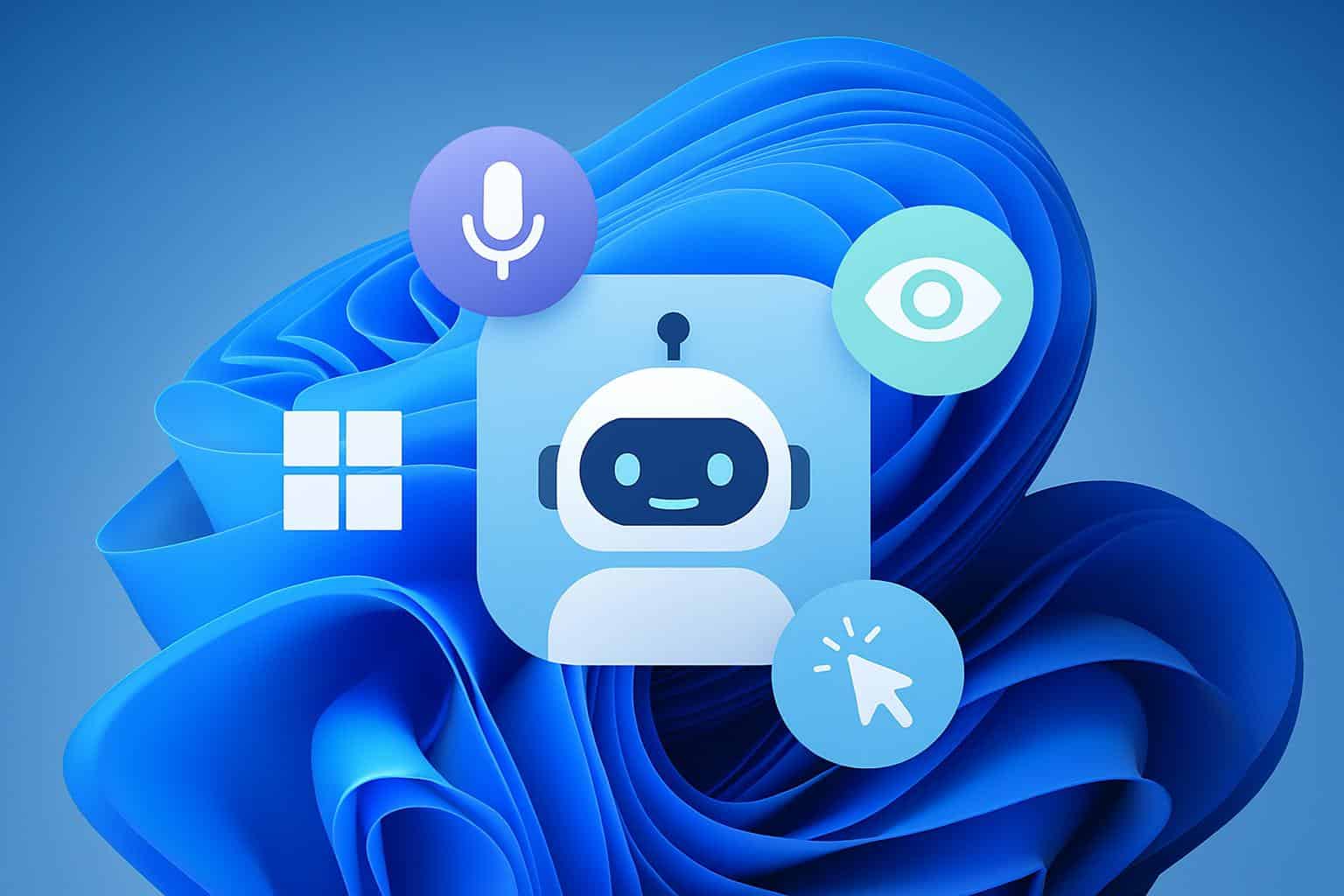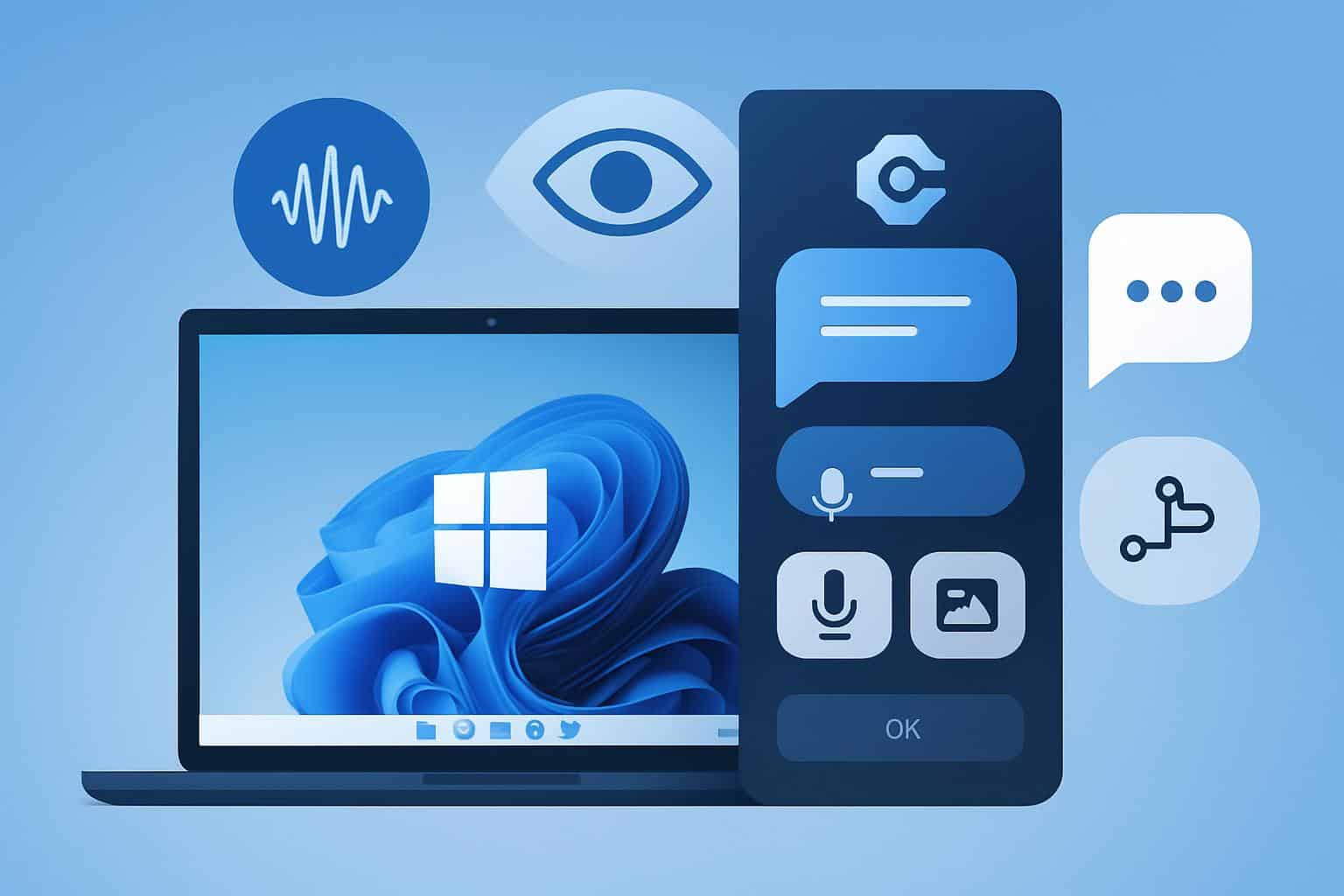Now Microsoft is moving Copilot in Windows 11 beyond chat and into actual help. Four significant updates — Actions, Voice, Vision and deeper Microsoft 365 integrations — move Copilot from a passive prompt box to an AI assistant that can listen to you, see your screen and perform any task with explicit permission controls. The features are currently open to testers inside the Windows Insider Program and will be gradually rolled out more broadly to PCs with Windows 11 installed.
Copilot Actions Shift From Answers to Execution
Copilot Actions is the headline change. As opposed to just responding, the agent can also open and close apps, type, scroll through pages, and chain steps together — pulling in numbers from a spreadsheet, crafting a summary narrative about them, and then clicking “send” via email. Microsoft is now housing this ability in an “Agent Workspace” on another desktop with another account and powerful permissions, so users see what it can potentially touch.

Operations start with a low amount of access and dynamically escalate only with explicit approval. Every time you want to view files, use an app or make a change, it asks for your approval. At any time, you can remove access or take over. It’s a minimalist, boundaries-first approach to solving the greatest fear about AI agents: invisible behind-the-scenes activity.
Practical examples are the standouts: “Reschedule my afternoon and tell everyone,” “Book a flight with my favorite airline and auto-fill traveler info,” or “Side-by-side these PowerPoint slides with that Word doc, listing their differences.” Those are the kinds of boring, multi-step workflows Copilot Actions hopes to pack into a single chat.
Copilot Voice Lets You Speak Naturally to Your PC
Using Copilot Voice, Windows 11 becomes as simple to talk to as your best friend. Rather than developing pristine prompts, you can simply express what you want in human language: “Find the budget file I downloaded last week,” “Show me emails from Dana about the launch plan,” or “Turn on Focus for 30 minutes and a side of quiet with no notifications.” Voice is a nice option but typing is still important, which makes sense if you are in shared or sensitive places where speaking out loud isn’t convenient.
The main stumbling block for most people has been the ability to write good prompts. Voice is a way of taking that barrier down because it translates everyday phrasing into specific intent. For Microsoft, the test is simple: reliability — as in past releases, basic system commands could be hit or miss — and early feedback from Voice Insiders will be crucial to proving that Voice isn’t just demos and can handle the scraggly reality of daily work.
Copilot Vision Sees and Explains What’s on Your Screen
Copilot Vision adds context. When asked, the assistant can “see” specific apps and interpret what’s on their screens to provide instructions, explanations, or highlights — without performing those tasks itself. Vision isn’t always on; you specifically select which app or apps (up to two) to permit, and a floating toolbar indicates when Vision is active.
Think walkthroughs and wayfinding: “Show me where to enable Track Changes,” “Explain this chart,” or “Which cells are outliers in this sheet?” Vision can overlay its own cursor over UI elements to guide you, but that still leaves agency with the user and simply adds contextual smarts. Microsoft says text-based usage will come after testing of Voice is completed.

Deeper Ties to Microsoft 365 and Favorite Apps
Copilot now extends deeper into OneDrive, Outlook and other Microsoft 365 apps, and can also access approved third-party sources, including Gmail and Google Drive via connectors.
With consent, it can create, summarize, format and export content from across your files and messages — allowing you to ask for results rather than manage each detail. Microsoft has also been expanding the variety of models that work behind Copilot, including access to frontier models from a range of providers, in efforts to improve accuracy and tone for different tasks.
The business value here is consolidation: fewer context switches between apps and less searching for scattered items. For knowledge work, that frequently means a real productivity gain. Industry analysts, such as those at Gartner, have indicated that AI agents in productivity suites will be a near-term booster for white-collar workflows.
Security Guardrails Reflect Lessons Learned in Recall
Microsoft’s permission-based approach is an obvious response to the criticism around the Recall feature, which ended up doing a little too much on-device content indexing. This time, the company is focused on clear boundaries, explicit requests for access and the power to pause or revoke any capability midstream. Vision is opt-in for each app, and Actions work in a limited space with visible status.
These decisions are consistent with the recommendations of organizations like NIST, which stress transparency as well as user control in AI systems. It’s simpler for enterprises to explain, audit and govern, and it should lessen the risk of unintentional data exposure while still allowing for real productivity gains.
Availability and What You’ll Pay on Your PC
The new Copilot features are being made available first for Windows Insider Program members and will be coming to all Windows 11 PCs over time. Microsoft says this is not exclusive to today’s “Copilot+” hardware refresh either, and that products with more modern NPUs will expedite on-device processing and decrease latency for voice and vision workloads.
If you test the features in their early state, try low-risk workflows and pay close attention to permission prompts. For most users, this will be a win in the context of transforming longer, multi-step tasks into short chat-like commands — while you do all of it with visibility and control right back in your lap.

